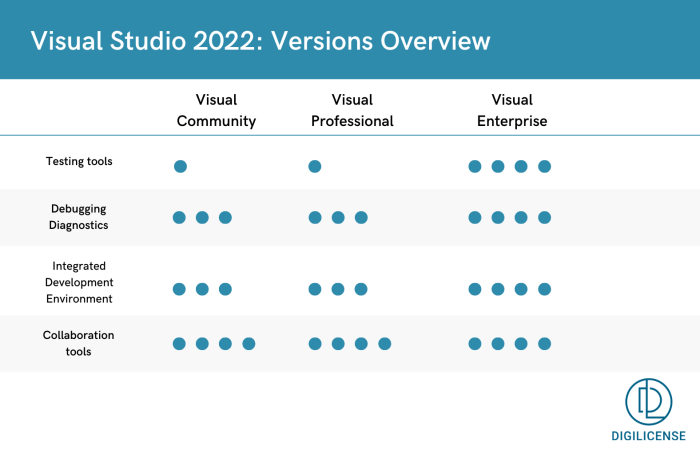
Visual merchandising design sets the stage for an engaging exploration of how the presentation of products impacts consumer behavior and retail success. This art and science blend not only captures attention but also influences purchasing decisions, making it a vital aspect of any retail strategy.
By understanding the principles of visual merchandising, businesses can create compelling displays that resonate with their target audience, drive sales, and foster brand loyalty. From lighting and layout to color schemes and technology integration, each element plays a crucial role in crafting an immersive shopping experience.
Introduction to Visual Merchandising Design
Visual merchandising design plays a crucial role in the retail industry, as it encompasses the art of displaying products in an appealing and strategic manner to attract customers. The primary goal is to enhance the shopping experience and ultimately drive sales. By utilizing color, lighting, space, and props, retailers can create an engaging environment that captures the attention of consumers.The principles of visual merchandising design include balance, contrast, harmony, and focal points.
Balance refers to the distribution of visual weight in displays, while contrast highlights key products by juxtaposing different elements. Harmony ensures that all components work together cohesively, and focal points draw attention to specific items. Understanding these principles can significantly impact consumer behavior, as well-executed visual merchandising can entice shoppers to explore more products, increasing the likelihood of purchases.
Business Innovation in Visual Merchandising

Innovative visual merchandising techniques are essential for brands to stand out in a competitive landscape. Companies like Apple and Nike have employed striking displays that not only showcase their products but also create immersive experiences. For instance, Apple stores often feature minimalist designs that allow the products to take center stage, fostering a sense of sophistication. Nike, on the other hand, utilizes interactive displays that encourage customers to engage with the brand, enhancing their shopping journey.Visual merchandising can drive business innovation by encouraging brands to think outside the box.
Creative displays can lead to increased foot traffic and consumer interaction. The integration of technology, such as augmented reality and digital signage, further enhances the visual merchandising experience. These tools allow brands to present information dynamically, providing customers with an engaging and informative shopping experience.
International Business and Visual Merchandising
Visual merchandising strategies can vary significantly across cultures, reflecting local preferences and shopping behaviors. For instance, in Western markets, a focus on minimalism and spacious layouts is often favored, while Asian markets may prioritize vibrant colors and intricate displays. This cultural differentiation requires brands to adapt their strategies accordingly to resonate with local consumers.Implementing visual merchandising in international markets comes with challenges, including understanding regional tastes, regulations, and market dynamics.
Global brands must invest time in research to ensure their displays align with local expectations. Adapting visual merchandising to local preferences often involves collaborating with local designers and conducting market testing to refine strategies before full implementation.
Business Interviews Related to Visual Merchandising
When interviewing visual merchandising professionals, it’s vital to ask targeted questions that reveal their experience and insights. Questions might include:
- What inspired you to pursue a career in visual merchandising?
- Can you describe a particularly successful project you’ve worked on?
- How do you stay updated with trends in visual merchandising?
A successful career in visual merchandising requires a blend of creativity, attention to detail, and an understanding of consumer psychology. Professionals should possess skills in design, spatial awareness, and an ability to analyze sales data. Insights from industry leaders often reveal that adaptability and continuous learning are crucial for navigating the evolving landscape of visual merchandising.
Job Search Techniques for Visual Merchandising Professionals
Creating an effective resume for visual merchandising roles involves highlighting relevant skills and experiences. Key elements to include are visual design, knowledge of retail environments, and project management experience. Additionally, showcasing a portfolio that features past work can greatly enhance a candidate’s appeal.Networking is essential for visual merchandising professionals. Attending industry events, joining professional organizations, and utilizing social media platforms like LinkedIn can help individuals connect with others in the field.
A compelling portfolio should demonstrate versatility and creativity, showcasing various projects that highlight an individual’s ability to create impactful visual displays.
Business Management and Visual Merchandising
Visual merchandising is integral to overall business management strategies, as it directly influences consumer experiences and sales performance. Effective visual merchandising can improve brand perception and customer satisfaction, leading to repeat business and increased loyalty. Retail operations management must incorporate visual merchandising efforts as part of an overarching strategy to maximize effectiveness.Key performance indicators (KPIs) for evaluating visual merchandising effectiveness include conversion rates, average transaction value, and customer engagement metrics.
Analyzing these KPIs helps retailers adjust their strategies to ensure that visual merchandising aligns with business goals and drives profitability.
Marketing Direct and Visual Merchandising
The synergy between direct marketing and visual merchandising is critical for amplifying campaigns. Effective visual merchandising can enhance marketing messages by creating an inviting atmosphere that resonates with consumers. For example, seasonal displays that align with promotional campaigns can capture attention and increase sales.To measure the effectiveness of visual merchandising in marketing, retailers can track metrics such as foot traffic, sales data during promotions, and customer feedback.
These insights allow businesses to refine their strategies and ensure that visual merchandising efforts complement overall marketing objectives.
Business Networking in Visual Merchandising
Building a professional network in visual merchandising is essential for career growth. Strategies may include connecting with mentors, attending workshops, and participating in online forums dedicated to visual merchandising trends. Industry events and trade shows provide opportunities to meet key players and gain insights into the latest innovations.Utilizing online platforms like LinkedIn can facilitate networking efforts by connecting professionals and sharing relevant content.
Engaging with industry groups, following influential figures, and participating in discussions can enhance visibility and establish credibility in the visual merchandising community.
Business Outsourcing and Visual Merchandising
Outsourcing visual merchandising services can offer several benefits, including access to specialized expertise and efficiency in project execution. Brands can leverage external agencies for fresh perspectives and innovative ideas that align with their vision.When selecting outsourcing partners, it’s crucial to consider factors such as their portfolio, experience in the industry, and compatibility with the brand’s goals. Successful outsourcing examples in visual merchandising highlight collaborations that have resulted in award-winning displays and increased sales.
Business Presentation Skills for Visual Merchandising
Creating impactful presentations on visual merchandising requires a clear structure and engaging content. Key tips include focusing on the audience’s needs, utilizing storytelling techniques to convey ideas, and employing visual aids to strengthen the message. High-quality visuals can enhance the overall presentation and make complex information more accessible.Effective storytelling in presentations involves sharing case studies and real-world examples that illustrate successful visual merchandising strategies.
By incorporating visuals that demonstrate design concepts and layout ideas, presenters can captivate their audience and emphasize the importance of strategic visual merchandising.
Business Productivity and Visual Merchandising
Improving productivity in visual merchandising teams can be achieved through various methods, such as establishing clear objectives, fostering a collaborative environment, and utilizing project management tools. Tools like Trello or Asana can streamline communication and task management, ensuring that projects stay on track.Time management is also critical for visual merchandising projects. Techniques such as prioritizing tasks, setting deadlines, and conducting regular progress reviews can enhance team efficiency and productivity.
Restaurant Industry and Visual Merchandising
Visual merchandising plays a significant role in restaurant design and layout, influencing the overall dining experience. Thoughtful design elements, such as color schemes, lighting, and furniture arrangement, can create an inviting atmosphere that encourages customers to stay longer and enjoy their meals.The impact of visual merchandising on customer dining experience can be profound. For instance, well-placed displays of featured dishes or promotional items can entice guests to order more.
Case studies of successful visual merchandising in restaurants often reveal how cohesive design strategies enhance brand identity and drive customer satisfaction.
Resumes and Cover Letters for Visual Merchandising Roles
Strong resumes for visual merchandising positions should emphasize relevant experiences and skills that align with job descriptions. Key elements to include are detailed descriptions of past roles, accomplishments, and specific skills related to visual design and retail management.A tailored cover letter should highlight an individual’s passion for visual merchandising and demonstrate an understanding of the brand’s vision. Personalizing application materials for specific roles can significantly increase the chances of securing an interview.
Business Retail and Visual Merchandising
The relationship between business retail strategies and visual merchandising is essential for driving sales and enhancing customer experiences. Retail visual merchandising trends, such as eco-friendly displays and interactive installations, reflect changing consumer preferences and can influence purchasing decisions.Looking ahead, the future of visual merchandising in retail environments is likely to involve further integration of technology, personalized experiences, and data-driven insights that help brands connect with consumers more effectively.
Risk Management in Visual Merchandising
Potential risks associated with visual merchandising projects include over-investment in displays that do not yield returns and failing to adapt to market trends. Developing a risk management strategy is crucial to mitigate these issues and ensure that visual merchandising efforts align with business objectives.Evaluating the effectiveness of visual merchandising-related decisions involves analyzing performance metrics and gathering customer feedback. This continuous assessment can inform future projects and help businesses adapt to an ever-changing retail landscape.
Business Sales and Visual Merchandising
Visual merchandising can significantly enhance sales performance by creating an appealing shopping environment that encourages consumer engagement. Strategic alignment of visual merchandising with sales goals ensures that displays effectively showcase products and promotions, maximizing their impact.Successful visual merchandising techniques that drive sales often include eye-catching window displays, seasonal themes, and strategically placed products that entice customers to explore further. These strategies can lead to increased conversion rates and higher average transaction values.
Sales Management and Visual Merchandising
Sales managers play a crucial role in overseeing visual merchandising efforts, ensuring that teams understand the importance of effective displays. Training sales teams on visual merchandising principles can enhance their ability to create appealing presentations that resonate with customers.Tools and resources such as training manuals, workshops, and access to design software can aid sales managers in implementing successful visual merchandising strategies within their teams.
Sales Teleselling and Visual Merchandising
Visual merchandising can support teleselling strategies by enhancing the visual aspects of virtual presentations. Incorporating visual merchandising elements into telesales training can empower sales representatives to effectively communicate product benefits and engage customers.Tips for enhancing teleselling success through visual merchandising include using clear visuals, showcasing product displays, and creating interactive experiences that captivate the audience.
Sales Training focused on Visual Merchandising
Designing a training program for sales staff that emphasizes visual merchandising involves incorporating key elements such as design principles, customer engagement techniques, and product knowledge. Such training can equip staff with the skills needed to create compelling displays that drive sales.Assessment methods for training effectiveness may include performance reviews, customer feedback, and observation of sales interactions. Continuous improvement of training programs ensures that sales staff remain knowledgeable and skilled in visual merchandising practices.
Business Security and Visual Merchandising
Security considerations in visual merchandising displays are essential to protect products and maintain safety in retail environments. Implementing measures such as surveillance systems, alarm systems, and secure display fixtures can enhance safety and deter theft.Safety training for visual merchandising personnel is vital to ensure that staff are aware of potential hazards and know how to address them effectively. Examples of security challenges faced in visual merchandising environments may include theft of displayed items or accidents due to improperly secured fixtures.
Wrap-Up

In conclusion, the significance of visual merchandising design cannot be overstated. As we navigate the ever-evolving retail landscape, brands that embrace innovative visual strategies will not only captivate consumers but also strengthen their market position. By continuously refining their approach, businesses can ensure that their visual merchandising remains a dynamic and effective tool for engaging customers and driving sales.
FAQ Explained
What is the primary goal of visual merchandising design?
The primary goal is to enhance the shopping experience by creating appealing displays that attract and engage customers, ultimately driving sales.
How does visual merchandising influence customer behavior?
Visual merchandising influences customer behavior by capturing attention, evoking emotions, and guiding purchasing decisions through strategic product placement and appealing aesthetics.
What are some common visual merchandising techniques?
Common techniques include the use of color, lighting, signage, props, and creating focal points to draw attention to specific products.
How can technology enhance visual merchandising?
Technology can enhance visual merchandising through interactive displays, augmented reality, and digital signage, providing dynamic and engaging experiences for consumers.
What role does cultural context play in visual merchandising?
Cultural context is crucial as it influences consumer preferences and responses, necessitating tailored strategies that resonate with local markets.




